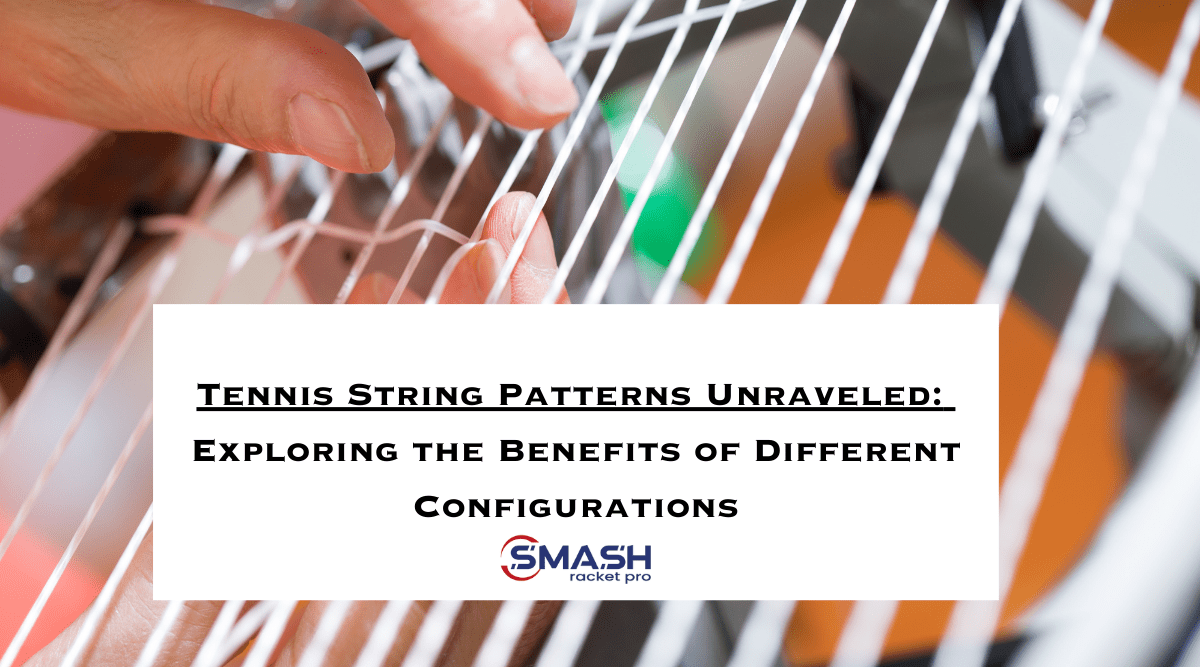Tennis String Patterns Unraveled: Exploring the Benefits of Different Configurations
The string pattern of a tennis racket is a crucial factor that can significantly influence your performance on the court. String patterns affect the way the ball interacts with the racket, ultimately impacting spin, control, and power. In this blog post, we'll break down the most common tennis string patterns and discuss the unique benefits each configuration offers.
-
Open String Pattern
An open string pattern refers to a configuration with fewer strings, typically with a 16x19 or 16x18 arrangement (16 mains and 19 crosses or 16 mains and 18 crosses). This design leaves more space between the strings, resulting in several advantages:
- Enhanced Spin: The wider gaps allow for greater ball bite, helping players generate more topspin and slice on their shots.
- Increased Power: The fewer strings result in a more elastic trampoline effect, providing players with added power.
- Softer Feel: Open string patterns tend to offer a more comfortable feel due to their increased string movement and vibration absorption.
However, open string patterns may have reduced durability and control compared to denser configurations, making them more suited to players who prioritize spin and power.
-
Dense or Closed String Pattern
A dense or closed string pattern features more strings, often arranged in an 18x20 or 18x19 pattern (18 mains and 20 crosses or 18 mains and 19 crosses). This configuration provides a tighter string bed, offering the following benefits:
- Enhanced Control: The increased number of strings offers more stability and precision, enabling players to place shots more accurately.
- Improved Durability: Dense string patterns are less prone to breakage due to the reduced string movement and tighter configuration.
- Flatter Shot: The tighter string bed results in less ball bite, promoting flatter shots with less spin.
Dense string patterns are ideal for players who value control, consistency, and durability over spin and power.
-
Hybrid String Pattern
A hybrid string pattern is a combination of two different string types, usually with polyester strings in the mains and multifilament or synthetic gut strings in the crosses. This setup offers a balance of the advantages found in both open and dense string patterns:
- Balanced Performance: Hybrid string patterns provide a blend of spin, control, and power, making them versatile options for players with diverse skill sets.
- Customizable Feel: Players can experiment with different string types and tensions to find the perfect combination that suits their playing style.
- Increased Durability: Polyester mains increase durability while the softer cross strings provide added comfort and feel.
Hybrid string patterns are well-suited for players looking for a tailored solution that caters to their specific needs and preferences.
Conclusion
Understanding the differences between open, dense, and hybrid string patterns can help you make an informed decision when selecting your tennis racket or restringing your current one. Each string pattern offers unique benefits, so consider your playing style, priorities, and preferences before making a choice. Whether you're a spin-oriented baseliner or a control-focused all-court player, the right string pattern can significantly enhance your game and help you unleash your full potential on the court.






